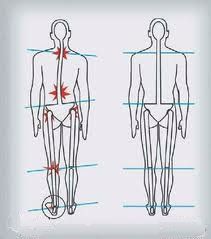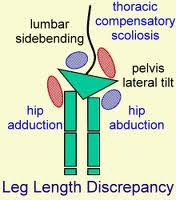Effects of pelvic asymmetry and low back pain on trunk kinematics during sitting: a comparison with standing.
Source
Department of Anatomy & Neurobiology, Dalhousie University, Halifax, Nova Scotia, Canada. ealeisa@dal.ca
Abstract
STUDY DESIGN:
A prospective study was conducted on a group of patients with unilateral nonspecific low back pain (LBP) and healthy controls.
OBJECTIVES:
To answer 3 questions: (1) Does pelvic asymmetry measured in standing affect the dynamics of motion performed in sitting? (2) Do patients with LBP perform trunk motions differently from non-LBP participants in sitting position? and (3) Do the kinematics of lateral flexion and axial rotation differ between sitting and standing positions?
SUMMARY OF BACKGROUND DATA:
The effect of pelvic asymmetry on trunk motion while sitting remains unclear. LBP has been associated with altered trunk kinematics in standing; however, there is limited information available describing trunk kinematics in sitting position in comparison to standing.
METHODS:
Pelvic asymmetry was measured in 54 patients with unilateral nonspecific LBP and 59 control subjects. A motion-analysis system was used to test the range and symmetry of lateral flexion and axial rotation in sitting and standing positions. Bivariate correlations, regression, multivariate analysis of variance, and paired sample t tests were used to test for associations between variables and differences between groups.
RESULTS:
We found significant: (1) correlations between pelvic asymmetry and asymmetric trunk motion performed in sitting, (2) differences between the LBP and control groups in patterns of trunk motion performed in a sitting posture, and (3) differences between kinematics of motions performed in sitting versus standing postures.
CONCLUSIONS:
This study shows a link between pelvic asymmetry and altered trunk motion in sitting position. We suggest that people with LBP may have a distinct compensatory mechanism, secondary to pelvic asymmetry, which puts the lumbar spine under higher stress. Movement asymmetry, rather than range of motion, may be a better indicator of disturbed function for people with LBP. Structural and functional asymmetries are factors that may be considered in the seating design and work environment.

